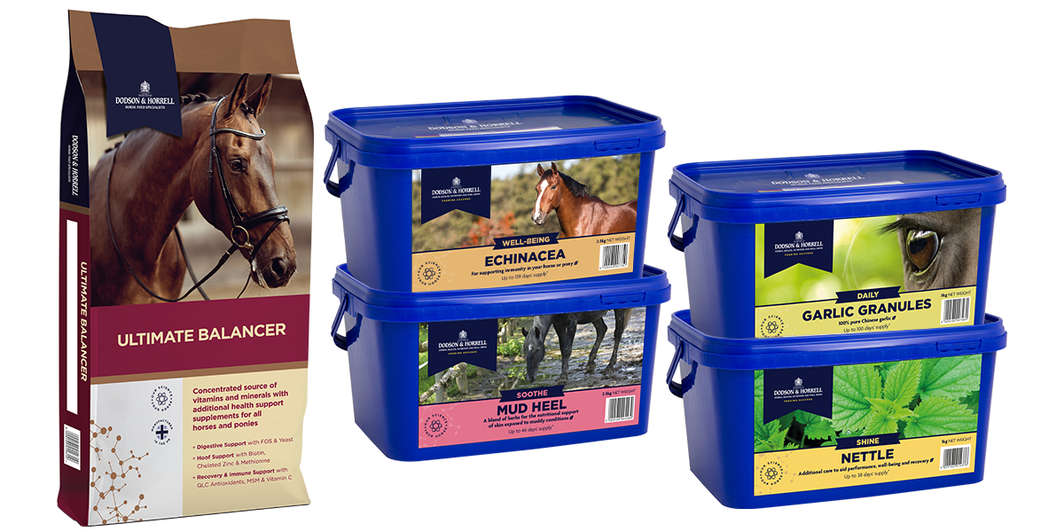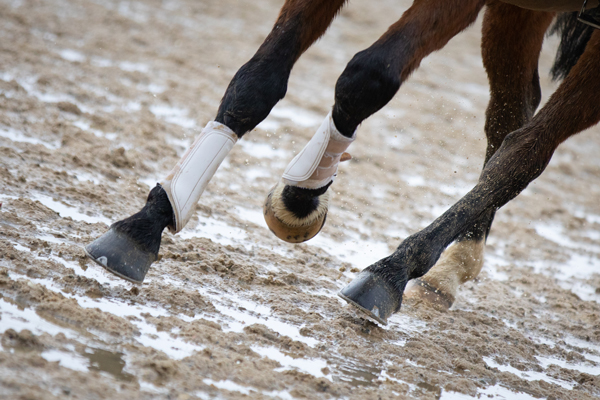“Mud fever” and “greasy heel”; known medically as pastern dermatitis, is an infection that commonly affects the skin of the lower legs in horses.
It can often result in oozing scabs and raw areas of skin, typically at the back of the pastern but can also appear higher up the leg. Commonly affecting the hind limbs, it can be painful and progress to swollen legs and in extreme cases cause lameness, and can be difficult to treat. Pastern dermatitis can be caused by the proliferation of bacteria on the skin around the pastern due to constant wetting and chilling of the skin of the lower legs, leading to formation of scabs and lesions.
To help prevent your horse developing mud fever, try to avoid letting your horse stand in areas of deep mud for long periods of time, and if possible, allow an affected horse to stand in a dry environment for some time each day. Placing bark chippings or rubber matting around gates and on field tracks can help to reduce poaching of paddocks. The main aim is to keep your horse’s legs as clean and dry as possible. During periods of time where we often get excess rainfall like in the Winter and Spring, bringing your horse in from the field, allowing the mud to dry and brushing away can help to keep moisture at bay. If you do wash your horse’s legs, make sure to dry them thoroughly afterwards and using a mild, antibacterial shampoo can help to clean the skin beneath; avoid overwashing where possible and the use of stiff brushes on affected areas. Horses with leg feathering can often be more prone to mud fever as the longer hair on the leg and pastern area can attract mud and additional moisture; clipping is often an option to help keep the legs cleaner and drier.
There are many barrier creams and products on the market but as always, correct nutrition can help. Just like our own, your horse’s skin relies upon a protective oily layer; ensuring your horse has plenty of essential fatty acids in their diet, from soya or rapeseed oil, can help. Vitamins, minerals and essential amino acids are used by the body to repair and maintain a healthy skin, so a balanced diet is crucial. If your horse doesn’t need extra calories from a full feed, giving him a high quality balancer will promote skin health and provide a fully balanced diet alongside forage. Similarly, antioxidants such as vitamins E and C are used in the body to ‘mop-up’ excess free radicals – the chemicals that can be associated with any disruption of skin health. Lastly herbs, including Echinacea purpurea, garlic and nettle, are reputed to support the horses’ natural immunity and skin.
Dodson & Horrell products that are specifically helpful for helping to prevent mud fever include:





